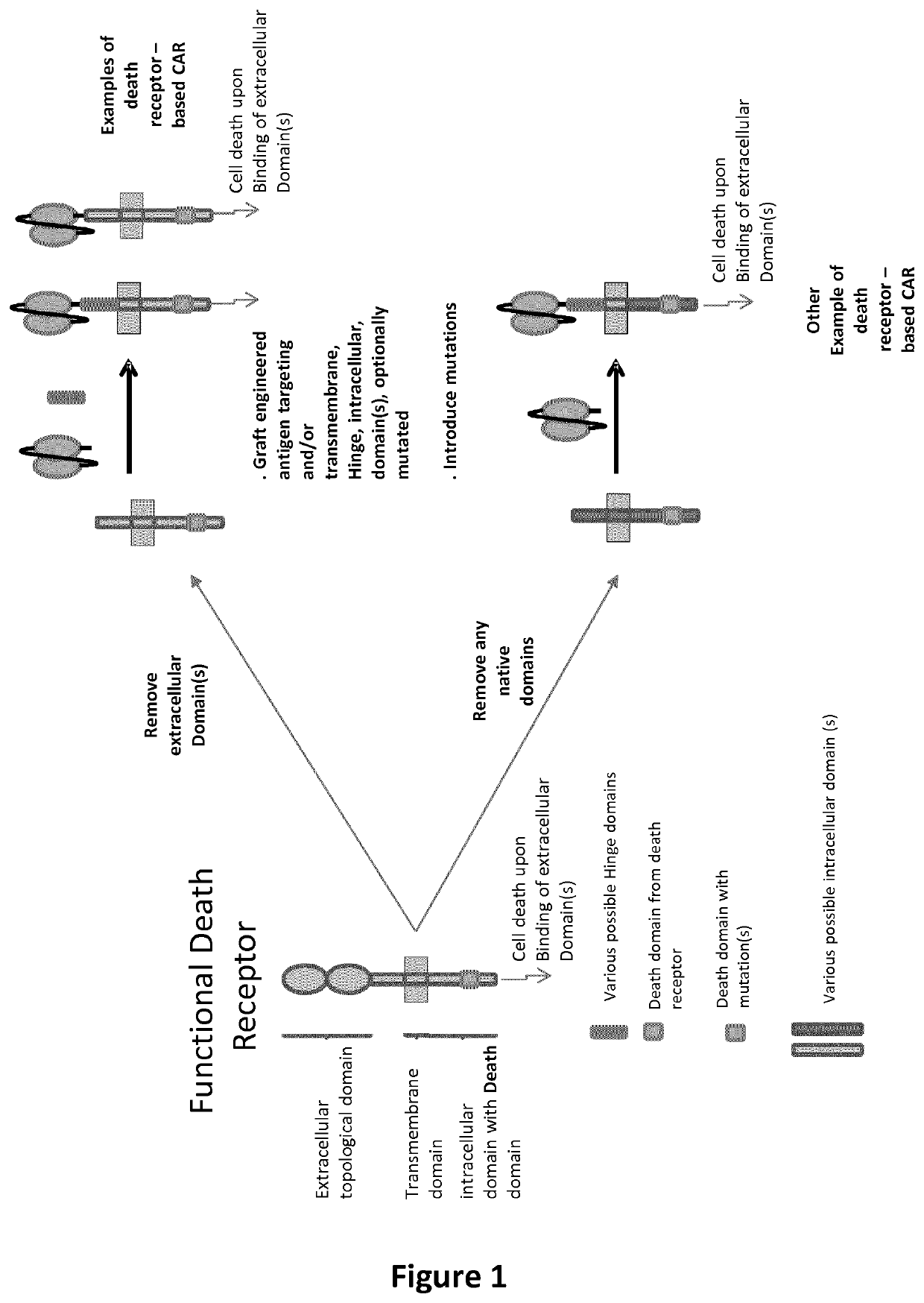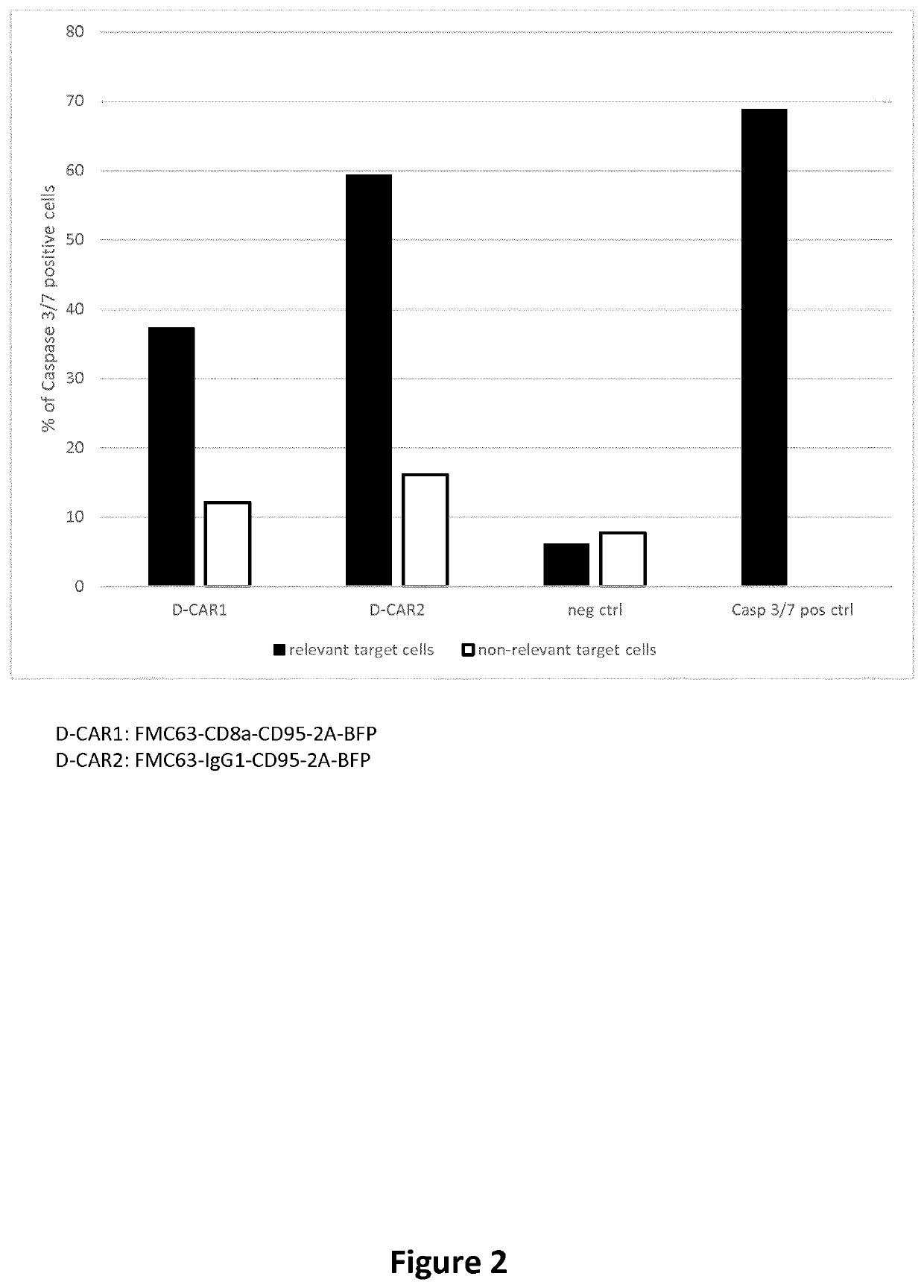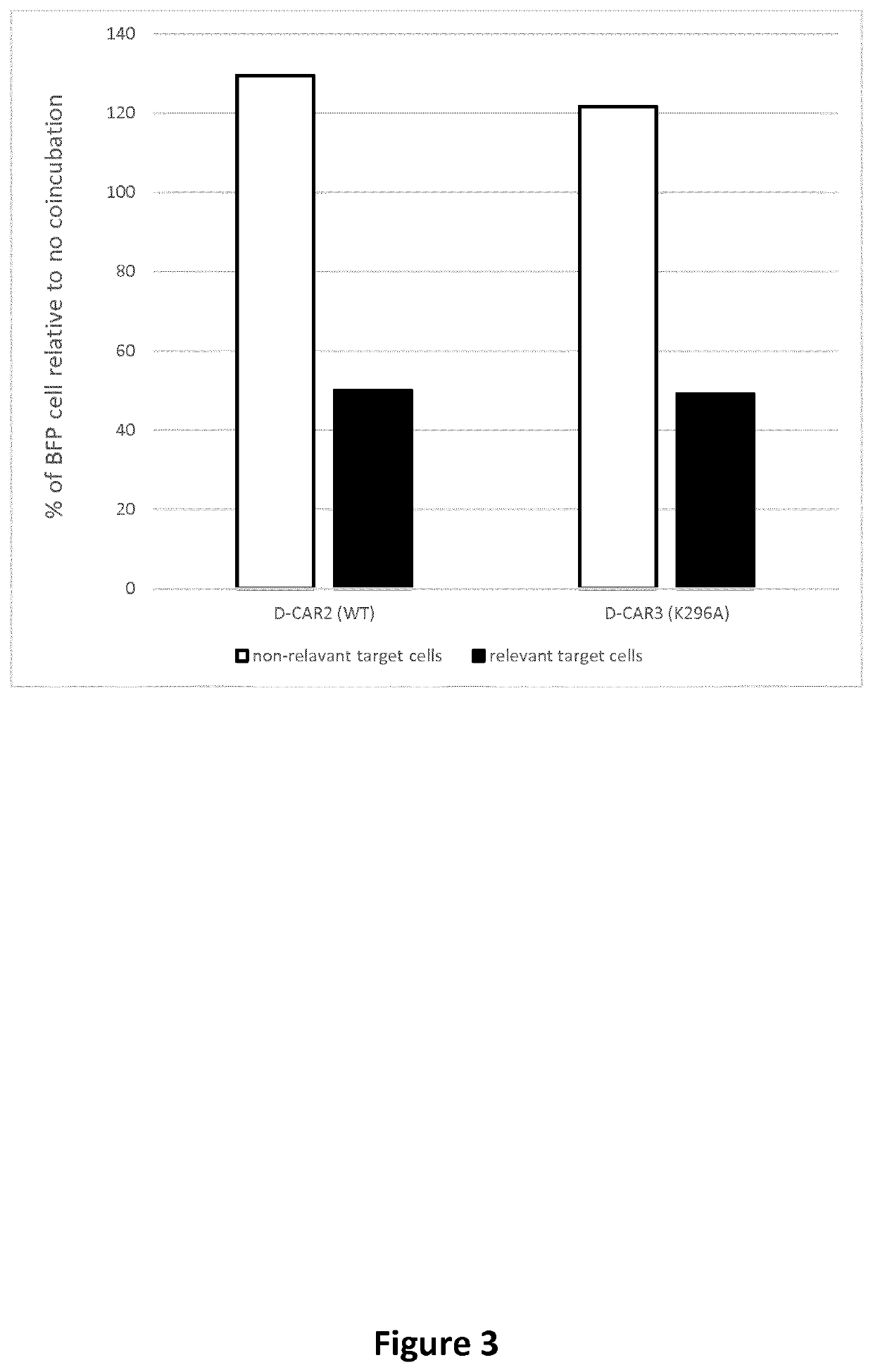Cell death inducing chimeric antigen receptors
a chimeric antigen receptor and cell technology, applied in the direction of immunoglobulins, peptides, drugs against animals/humans, etc., can solve the problems of the application of engineering principles to biology is complicated by the inability to predict the functions of even simple devices and modules within the cellular environment, and the diversity of available parts, so as to achieve the effect of improving safety
- Summary
- Abstract
- Description
- Claims
- Application Information
AI Technical Summary
Benefits of technology
Problems solved by technology
Method used
Image
Examples
example 1
Cell Death Inducing CARs
[0783]Cell death inducing CARs are designed to be composed of signal peptide for targeting to the cell surface (SEQ ID: 63), an antigen targeting domain (SEQ ID: 64 to 65) followed by a stalk (or hinge) domain (SEQ ID: 66 to 67), a transmembrane domain (SEQ ID: 68) and an intracellular domain (SEQ ID: 69). The intracellular domain containing a so-called death domain is intended to promote cell death upon engagement of the antigen recognition domain. Cell death inducing CARs are cloned into lentiviral production plasmids (genome plasmid) upstream of a 2A (SEQ ID: 70) cis-acting hydrolase element followed by a reporter marker (e.g. fluorescent proteins SEQ ID: 71 to 72) under the control of different promoters (SEQ ID: 73 to 75). Standard molecular biology technics such as PCR (Agilent Herculase II fusion Enzyme cat#600677), enzymatic restriction digestions (New England Biolabs or ThermoFisher), ligations (T4 DNA ligase cat#EL0011) and bacterial transformations...
example 2
Characterization of Cell Death Inducing CARs in Immortalized Human T-Cells
[0786]Human T-cell line (Jurkat) are incubated in an untreated 12 well plate pre-coated with 30 μg / mL retronectine (Takara cat#T100B) in the presence of lentiviral particles encoding an cell death inducing CAR (SEQ ID: 76 or 78) in RPMI-1640 serum free medium (ThermoFisher cat# SH30027FS) for 2-3h at 37° C. Twice the volume of growth media containing 20% FBS and 50× dilution of penicillin-streptomycin is added to the cells for overnight incubation. The cells are then washed and cultured in RPMI 1640 Medium (ThermoFisher cat#SH30027FS) for several days supplemented with 10% FBS. The whole bulk cell death CAR population is assessed for Caspase 3 / 7 activation by co-incubation with model cell lines expressing either the cell death inducing CAR target antigen (CD19 expressing HEK293) or a non-relevant antigen (PSMA expressing HEK293). Caspase 3 / 7 activation is detected using the CellEvent Caspase-3 / 7 Green Flow Cyt...
example 3
Generation of Mutated Cell Death Inducing CARs
[0787]Mutations that attenuate the engineered cell death inducing CAR self-association or binding to FADD are incorporated into the cell death inducing CAR constructs using the QuikChange Lightning Multi Site-Directed Mutagenesis Kit (Agilent cat#210514-5). One oligonucleotide containing the desired mutation(s) is designed for each identified position according to the QuikChange Lightning Multi Site-Directed Mutagenesis Kit recommendations and sythetized de novo (IDT, Integrated DNA Technologies). The QuikChange Lightning Multi Site-Directed Mutagenesis procedure is then applied, according to the manufacturer instructions, for each individual oligonucleotide encoding a mutation using a template plasmid encoding the D-CAR2 insert (SEQ ID: 78) previously subcloned in a pSelect backbone (Invivogen). Using the described strategy and oligoK296A (gtatgacacattgattGCagatctcaaaaaagcc; SEQ ID NO: 99) a D-CAR containing the K296A mutation (numberin...
PUM
| Property | Measurement | Unit |
|---|---|---|
| Fraction | aaaaa | aaaaa |
| Cell death | aaaaa | aaaaa |
| Electrical resistance | aaaaa | aaaaa |
Abstract
Description
Claims
Application Information
 Login to View More
Login to View More - R&D
- Intellectual Property
- Life Sciences
- Materials
- Tech Scout
- Unparalleled Data Quality
- Higher Quality Content
- 60% Fewer Hallucinations
Browse by: Latest US Patents, China's latest patents, Technical Efficacy Thesaurus, Application Domain, Technology Topic, Popular Technical Reports.
© 2025 PatSnap. All rights reserved.Legal|Privacy policy|Modern Slavery Act Transparency Statement|Sitemap|About US| Contact US: help@patsnap.com



